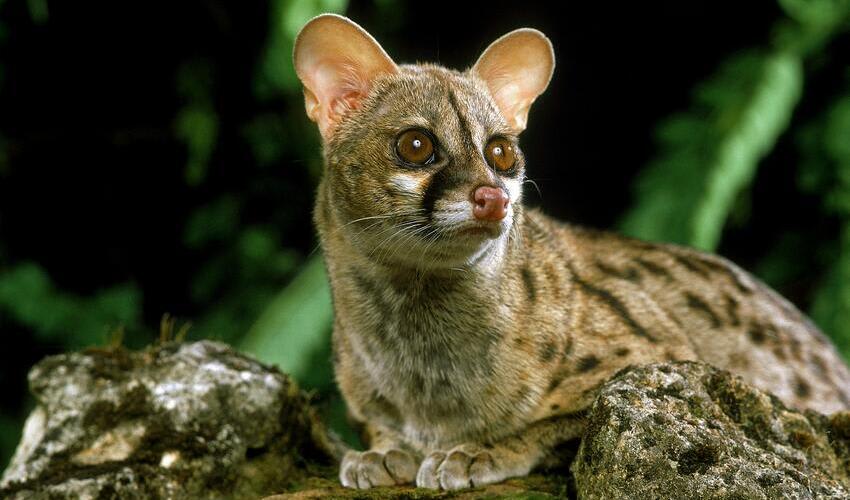Viverridae – Viverrids
Have stripes, spots, or bands on their bodies & perianal glands produce a strong smell
Viverrids are a large group of small—to medium-sized mammals belonging to Carnivora. This family is quite diverse and is primarily found in the Old World, specifically throughout Africa, southern Europe, and Southeast Asia. Many viverrids have also made their home in Madagascar, where they have evolved into several endemic genera, meaning they are found nowhere else in the world.
Viverrids are known for their elongated bodies and short legs, which give them a low-slung appearance. Their sizes vary, with some species measuring as little as 30 cm (11 inches) in length, while others reach lengths of up to 1 meter (39 inches). Their weight can also range widely from less than 1 kg (2.2 pounds) to 14 kg (31 pounds), displaying the diversity within the family.
These creatures typically have small skulls with distinct facial characteristics. They possess short, pointed, or semi-pointed upright ears and long, pointed snouts, which aid them in foraging and hunting for food. Their fur is often a sight to behold, featuring a range of patterns, including stripes, spots, or bands. These markings provide camouflage from predators and help them to sneak up on their prey. Additionally, many viverrids have tails with contrasting colored rings, adding to their distinctive appearance.
One of the most notable characteristics of viverrids is their perianal glands, which are located near the base of their tails rather than at the anus, as in some other mammals. These glands produce a strong-smelling secretion that is unique to each individual. In some species, this scent is so potent that it can serve as a deterrent to predators. These scent glands are also used for marking territory and signaling reproductive status.
Viverrids have highly developed vision, smell, and hearing. Their keen eyesight allows them to navigate their environments and detect movement, even in low-light conditions. A strong sense of smell enables them to locate food and identify other individuals. At the same time, their acute hearing is crucial for detecting the subtle sounds of prey or the approach of potential threats.
Genera in this family
These African natives are the only viverrids that can stand on their rear legs
Coffee lover? You might’ve got a taste of a coffee made from their poop!
Can produce a wide range of sounds — from growls and hisses to cough-like barks
Body of a cat, the face of a possum – meet the mysterious Asiatic linsangs!
Despite their nickname “bearcat,” they are not related to bears or cats
With an appearance that blends features of both a dog and a weasel
Has a quieter lifestyle and is rarely seen by people







